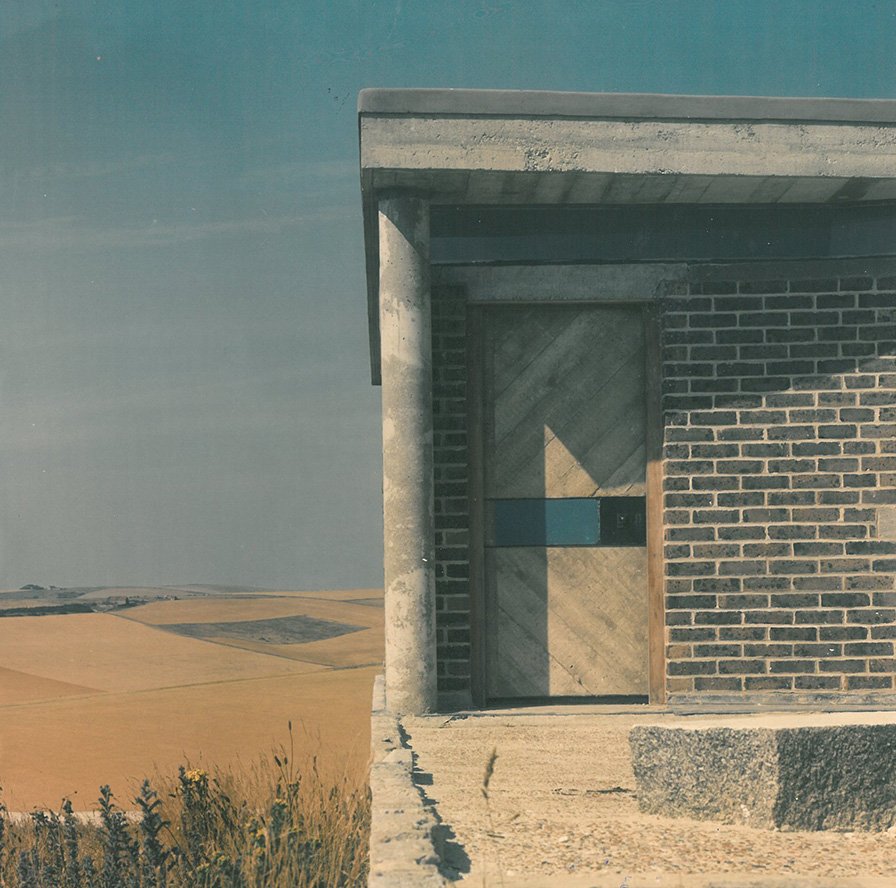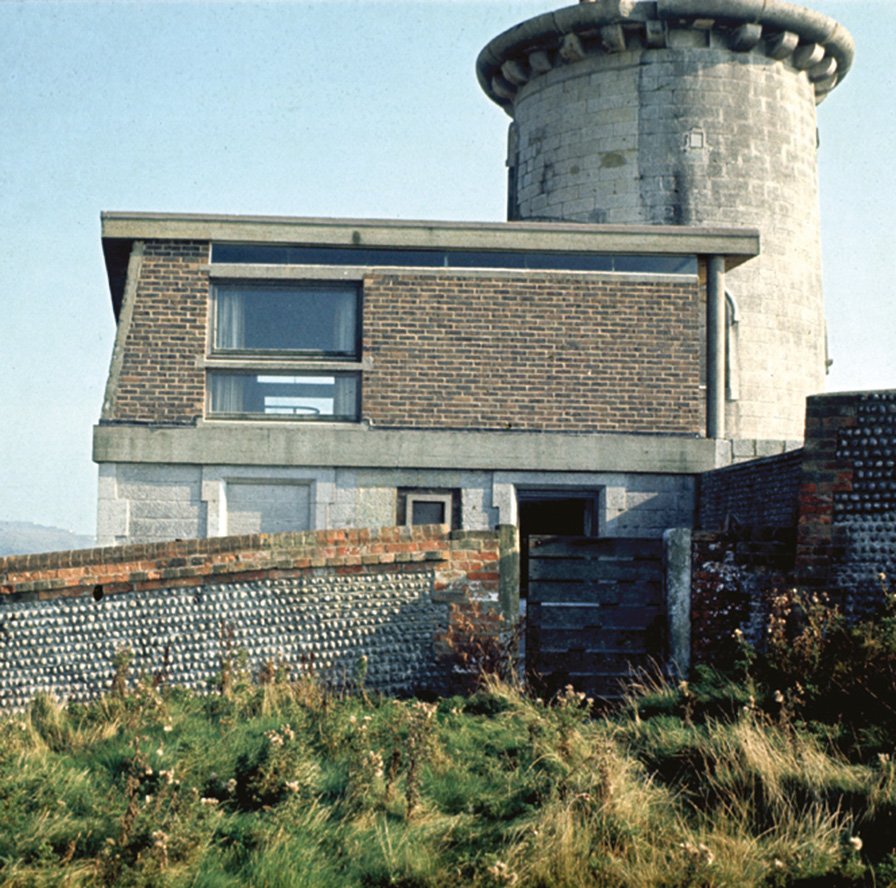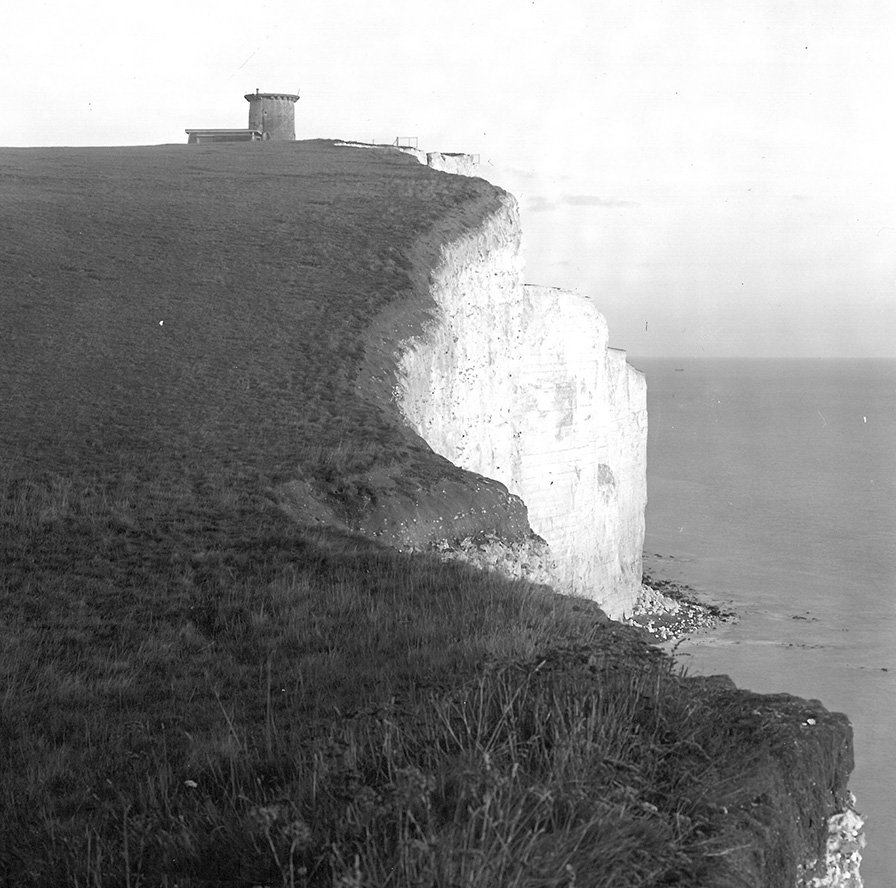Ahead of its time: Belle Tout Lighthouse (1955-1960)
Cullinan Studio have always been innovators; specialists in things that have never been done before. Our archives are full of buildings that point to the future, of ideas that were radical at the time but have since become accepted wisdom.
Our new blog series Ahead of its Time takes a look at some of the groundbreaking projects from our history, showing how the concepts that shaped them also helped to reshape mainstream thinking about architecture and the way buildings connect to places, people and the natural environment – today and for the future.
We begin with Belle Tout Lighthouse in East Sussex, the first significant project undertaken by our founder Ted Cullinan and a pioneering retrofit that would provide the foundations of the Studio ethos.
Built in 1832 on the cliff tops of Beachy Head, Belle Tout lighthouse was in a state of dereliction by the time Ted Cullinan’s parents happened to drive past it in 1953 and decided it would make a spectacular family home. Facing a costly demolition, Eastbourne council allowed the Cullinans to lease it for a peppercorn rent if they could make it habitable.
The task was entrusted to the 22 year-old Ted, then studying at Cambridge and at the Architectural Association in London. The experience was his first opportunity to try out in a live project the ideas, principles and ways of working that would provide the foundations for the Cullinan Studio ethos.
Ted’s plan for the lighthouse was an imaginative repurposing of a functional building for a domestic use, preserving the structure and materials that could be reused, and repairing what could be repaired. That approach remains a Cullinan Studio hallmark – though we would now call it retrofit.
The elements that couldn’t be repaired Ted demolished. But he replaced them with a strikingly modern design (influenced by his recent visit to Le Corbusier’s Ronchamp chapel) focused on comfortable living. This included a new concrete floor and a landward entrance facade incorporating 12 windows. The open-plan living space, with its internal ‘rooms’ defined by the curving external walls of the tower, provided the dwelling with plenty of natural light and air. The focus on natural, low energy light and comfortable ventilation is still a key priority of Cullinan Studio design.
However, it was not only the design of Belle Tout that pointed the way to Cullinan Studio’s later direction. Even more significant was the process of realising that design.
‘The design of buildings is a social act’
Ted persuaded fellow architectural students to spend their weekends travelling from Cambridge and London to the Sussex coast, physically helping him to demolish and rebuild the lighthouse (including, in those pre-health and safety days, threading steel ropes through the windows and using a winch to bring down the derelict walls).
The hands-on, team-based approach to the build prompted Ted to think in radical terms about how architects might work, and about what kinds of architecture that work might produce.
For one, he came to believe that architects should design for simplicity, as if they were literally going to build it themselves. For example, building is easier if locally available materials are used – or even better, on-site materials re-used – and if elements are straightforward to assemble by hand.
Above all, he recognised that making a building requires people with a range of skills, and that they work best collaboratively - which includes rigorously debating, testing and analysing ideas together.
Collaboration, repurposing existing structures, reusing materials, people-centred design and connecting to nature… In the process of building Belle Tout Lighthouse, Ted not only developed these ideas but also began to gather together like-minded people who bought into the approach. The Cullinan practice evolved as a vehicle for making architecture in this way, and the ethos was made explicit in its famous 1976 manifesto, which established it as a cooperative and declared: ‘The design of buildings is a social act’.
Belle Tout Lighthouse today
Belle Tout Lighthouse served as a home for the Cullinans and then others for decades, but by the end of the century it was threatened by the erosion of the cliff and in real danger of imminently tumbling into the sea. In normal circumstances the response might have been to demolish the structure and build a new one.
Instead, in 1999 a remarkable solution was engineered – and one that was very much in keeping with the Ted Cullinan philosophy of saving what can be saved and preserving structures as far as possible. The entire 850 tonne lighthouse was raised on hydraulic jacks and moved 17 metres back from the receding edge to a new place of safety. Fittingly the architect on the project was Dominic Cullinan, Ted’s nephew.
Now a thriving bed-and-breakfast, Belle Tout Lighthouse still stands as a monument to the Cullinan Studio philosophy, and a pointer to the future of our distinctive approach to architecture.








